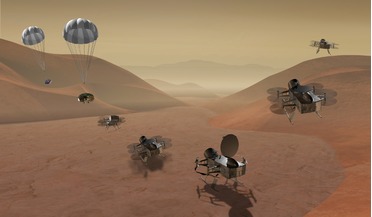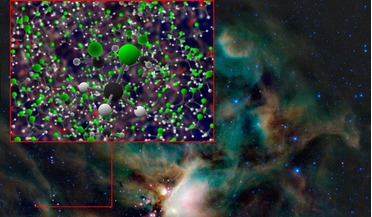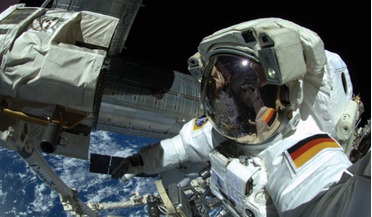 22 December 2017
Where is NASA going next?
22 December 2017
Where is NASA going next?
... Steve Squyres of Cornell University in Ithaca, New York, CAESAR seeks to return a sample from comet 67P/Churyumov-Gerasimenko to determine its origin and history. The comet has already been studied by ESA’s Rosetta spacecraft and it is now the final...
 02 October 2017
New molecule discovery may have implications for chemistry on Earth
02 October 2017
New molecule discovery may have implications for chemistry on Earth
... Array (ALMA) in Chile, a team of astronomers have found faint traces of the chemical compound on the famous comet 67P/Churyumov-Gerasimenko (67P/C-G) that was the target of the Rosetta mission and around an infant star about 400 light-years ...
 June 2015
The day Philae landed: how a rough touchdown still made history at the Rosetta Mission
June 2015
The day Philae landed: how a rough touchdown still made history at the Rosetta Mission
... by Philae of Rosetta seconds after separation. Left: Philae imaged by Rosetta’s OSIRIS camera during the descent to the comet surface. This confirmed that the landing gear had unfolded. Whilst attached to Rosetta, Philae continuously communicated...
 15 November 2014
Pioneering Philae completes main mission before hibernation
15 November 2014
Pioneering Philae completes main mission before hibernation
... planned for the final block of experiments on the surface. First comet panoramic In addition, the lander’s body was lifted by about 4... While descent images show that the surface of the comet is covered by dust and debris ranging from millimetre ...
 26 August 2015
Rosetta Experts to Present the Mission at International Astronautical Congress in Jerusalem
26 August 2015
Rosetta Experts to Present the Mission at International Astronautical Congress in Jerusalem
... from the point of its initial conception. The interplanetary cruise took more than 10 years. The target, comet 67P Churyumov-Gerasimenko, was reached in August 2014. During the long cruise, the spacecraft had been put into a two...
 August 2016
International cooperation drives Germany’s space ambitions
August 2016
International cooperation drives Germany’s space ambitions
... mission. An example of a very successful international project in which DLR participated is the European Rosetta mission to Comet 67P/Churyumov-Gerasimenko, in which development and operation of the Philae lander was led by DLR. Together with ESA...